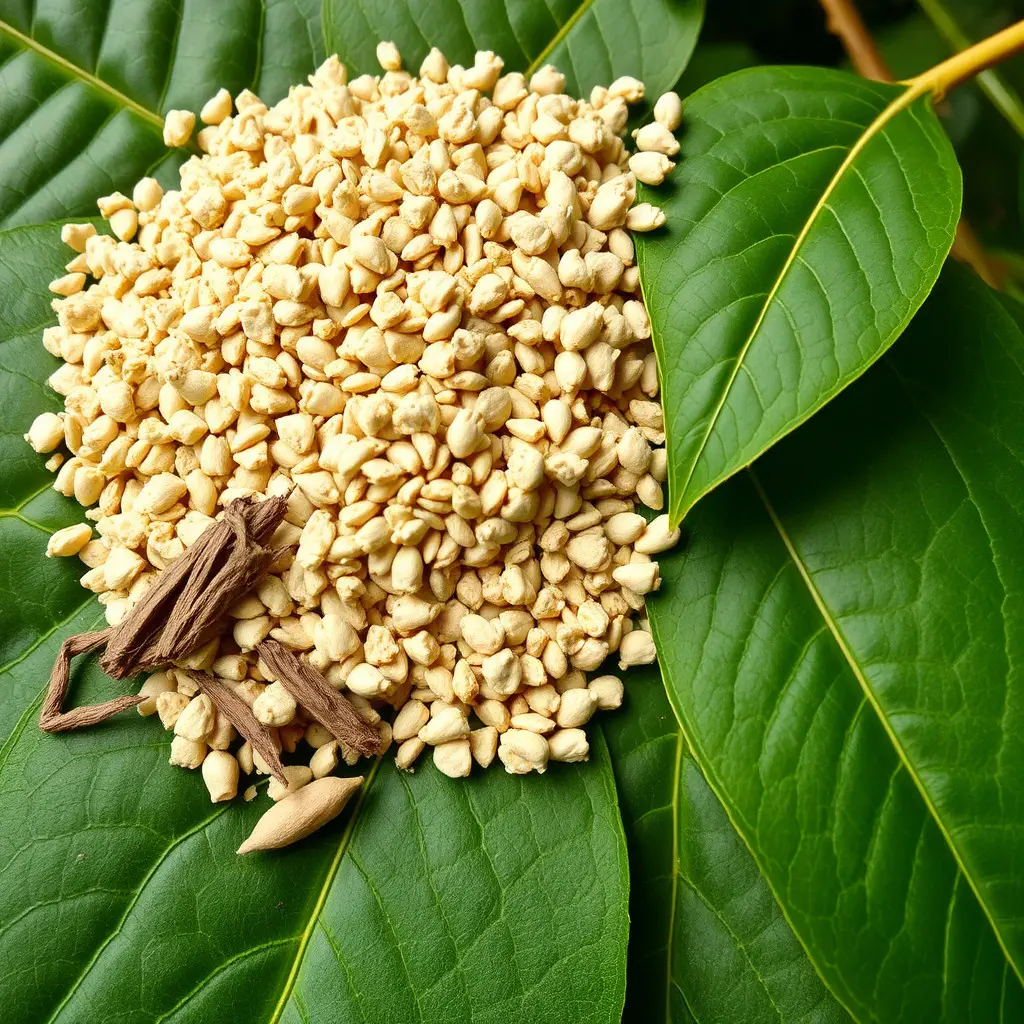Kratom, derived from Southeast Asian plants, is a natural alternative for pain management with alkaloids like mitragynine and 7-hydroxymitragynine that interact with opioid receptors. It has a history of safe use in traditional medicine but can cause false positive results on opiate tests, highlighting the need to differentiate between its use and opioid misuse. The effects of different kratom strains, such as Maeng Da, vary from energizing to calming. Legislation around kratom differs by region, necessitating awareness of local laws. Blue Lotus smoke shares some alkaloids with kratom but has distinct effects and should not be confused with it, especially since both can lead to misinterpretations in drug tests. Users are advised to consult healthcare professionals before using either substance, consider their sensitivity, and be cautious about dosage and combinations with other substances. The rise in popularity of these botanicals underscores the need for precise drug testing protocols that accurately identify their compounds to maintain fairness in drug testing outcomes.
Exploring the natural pathways to pain relief, this article delves into the use of kratom supplements as an alternative to traditional analgesics. We will unravel the complexities of kratom’s role in pain management, its interactions with other substances like blue lotus, and the implications these choices may have on drug testing outcomes. As you navigate through “Understanding Kratom and Its Role in Pain Management,” “The Intersection of Kratom, Blue Lotus, and Drug Testing Implications,” and “Safely Integrating Kratom into a Natural Pain Management Routine,” insights will be provided to help you make informed decisions about incorporating kratom into your wellness regimen.
- Understanding Kratom and Its Role in Pain Management
- The Intersection of Kratom, Blue Lotus, and Drug Testing Implications
- Safely Integrating Kratom into a Natural Pain Management Routine
Understanding Kratom and Its Role in Pain Management

Kratom, a plant native to Southeast Asia, has garnered attention in natural pain management circles due to its alkaloid profile and potential therapeutic effects. Mitragynine and 7-hydroxymitragynine, the primary active compounds found in kratom leaves, interact with opioid receptors in the brain, offering analgesic properties that can help manage pain. This interaction is what makes kratom a viable alternative for individuals seeking relief from chronic or acute pain without the side effects commonly associated with prescription opioids. The use of kratom as a natural remedy has been part of traditional medicine in its region of origin for centuries, indicating its historical significance and safety when administered responsibly.
When considering kratom for pain management, it’s important to understand the various strains available, as they can influence the experience differently. While some strains, like Maeng Da, are known for their invigorating and analgesic effects, others may offer a more soothing and calming sensation. Additionally, users should be aware that consuming kratom can potentially result in a positive drug test for opiates due to its chemical similarities to opioids. However, it’s crucial to differentiate between the use of kratom and the misuse of opioids. The legal status of kratom varies by region, and users should always ensure they are complying with local laws. Furthermore, those considering kratom as a part of their pain management regimen should consult with healthcare professionals to assess its compatibility with any existing health conditions or medications. The Blue Lotus, historically known for its psychoactive properties, is often associated with kratom due to their shared alkaloids; however, it’s distinct from kratom in its effects and use. It’s essential to approach the use of both substances with caution and respect for their potency.
The Intersection of Kratom, Blue Lotus, and Drug Testing Implications

Kratom and Blue Lotus, both derived from natural sources, have garnered attention for their potential as natural pain management alternatives. Kratom, originating from the leaves of Mitragyna speciosa, has been traditionally used in Southeast Asia for its stimulant and sedative effects. Similarly, Blue Lotus, an ancient herbal remedy, is known for its relaxing properties and has historically been used in various medicinal contexts. The intersection of these two botanicals becomes particularly relevant when considering the implications they may have on drug testing outcomes.
When individuals consume kratom or Blue Lotus, the compounds within these substances can interact with drug metabolite detection methods. For instance, kratom’s alkaloids, such as mitragynine and 7-hydroxymitragynine, can register on tests designed to detect opioids. Similarly, Blue Lotus, when smoked, may produce metabolites that could be misidentified as those from other psychoactive substances. This overlap can lead to false positives in drug screening scenarios, posing challenges for individuals who use these supplements for pain management or other health-related reasons. It is crucial for employers and testing facilities to recognize the distinction between the use of these natural products and illicit drugs. As such, there is a growing need for updated testing protocols that can differentiate between naturally occurring compounds in kratom and Blue Lotus and synthetic or prohibited substances. This discernment is essential to ensure fair and accurate outcomes in drug testing, particularly as the use of these supplements becomes more widespread.
Safely Integrating Kratom into a Natural Pain Management Routine

When considering natural pain management options, kratom supplements have gained attention for their potential analgesic properties. Integrating kratom into a pain management routine requires careful consideration to ensure safety and efficacy. It’s crucial to start with a low dose to gauge individual sensitivity, as the effects of kratom can vary widely among users. The alkaloids present in kratom, such as mitragynine and 7-hydroxymitragynine, are believed to interact with opioid receptors in the brain, offering pain relief without the need for traditional opiates. Users should be aware that kratom’s effects can include stimulation at low doses and sedation at higher doses, which can be beneficial for managing different types of pain.
For those concerned about drug testing, it’s important to note that kratom is distinct from other substances like the blue lotus, despite both being naturally occurring. Kratom metabolites may be detected in drug tests designed to identify opioid use, potentially leading to false positives. Those who are subject to drug testing should exercise caution and consult with a healthcare provider before incorporating kratom into their regimen. Additionally, the long-term effects of kratom are still being studied, so maintaining a dialogue with healthcare professionals is key to safely managing pain with kratom supplements. Users should also adhere to recommended dosages, avoid combining kratom with other substances, and be mindful of any changes in local laws regarding its use. By following these guidelines, individuals can explore the benefits of kratom as a natural alternative for pain management while minimizing potential risks.
In conclusion, kratom has emerged as a notable natural supplement for pain management, offering an alternative to traditional pharmaceuticals. Its interaction with substances like blue lotus warrants careful consideration, particularly in the context of drug testing implications. As detailed throughout this article, integrating kratom into one’s health regimen requires a prudent approach, emphasizing safety and adherence to legal guidelines. Prospective users should approach the use of these supplements with informed discretion, especially when considering potential impacts on drug test outcomes. By understanding the nuances of kratom’s role in pain management and its association with substances like blue lotus, individuals can make more informed decisions about incorporating these natural options into their wellness practices.






